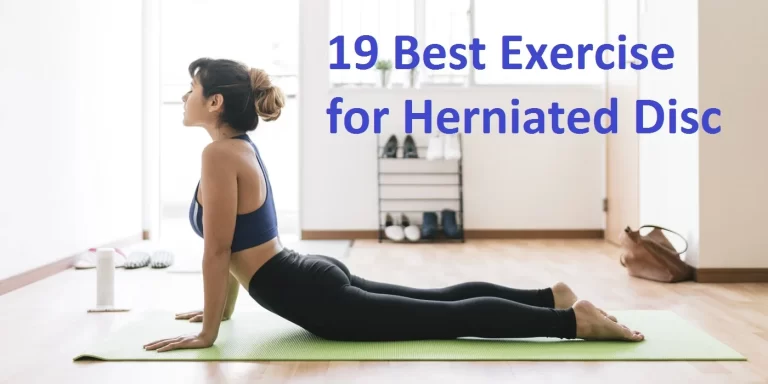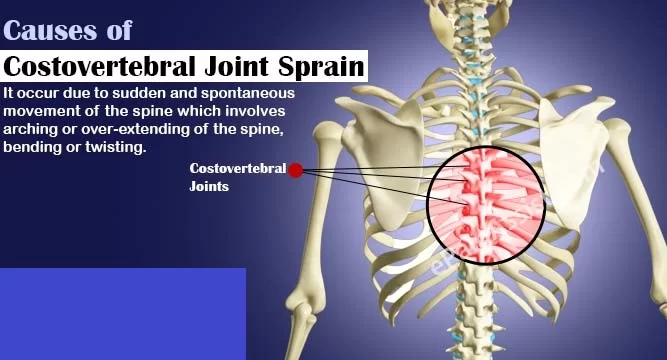Hang Clean Exercise: Health benefits, How to do? Variations
What is Hang Clean Exercise?
The hang clean is one of the types of power clean exercise, with the word means “hang” referring to the initial position because the weight hangs in front of the body versus starting from the ground. The hang cleans use many muscle groups, making it a great addition to total body strength training workouts. This hang clean is a full-body exercise. Several joint actions are involved, with the primary muscles activated being the gluteus maximus, hamstrings, quadriceps, erector spinae, trapezius, latissimus dorsi, deltoids, gastrocnemius, and soleus.
This exercise generally involves using continual movement as you transition from one position to the next position. However, it can also be performed with a pause between two positions for more effect. Hang cleans helps to improve your explosive power. when you perform hang clean in proper form, the hang clean can increase your power output during other weightlifting exercises. It does require solid technique, power, and precision but with consistent practice, you will get it in less time and benefits with full-body coordination and involvement, explosiveness, strength, and even have athletic carry over.
Which Muscle is used for hang clean exercise?
This exercise uses your whole body muscles.
- Hamstrings muscles
- Glutes
- Quadriceps
- Core
- Biceps
Here, some Benefits are explained by doing the Hang Clean
- This is a total-body exercise.
- It can help to build muscles across your body, including in your glutes, hamstrings, quadriceps, biceps, and core.
- It can help to improve your explosive power.
- It can prepare you for other Olympic lifts.
- It has a positive effect on strength, power, performance, and speed development
- It can also help you with functional fitness (day-to-day activities), such as picking up heavier objects from the floor.
- Maintaining a healthy posture
- This can help you to reduce the risk of developing back pain.
How to Do a Hang Clean?

- For this exercise, you have to Load proper weight in barbell the barbell appropriate for your fitness level.
- Then, put it on the ground in front of you. Stand with your foot hip-width apart, contract your core muscles, and your shoulders back and chest move forward.
- Then come into a squat position and hold a barbell with hook grip, it should be slightly wider than shoulder-width.
- A hook grip is a method where your palm faces towards the body, but the thumb hooks the bar and is close to your body and secures with your fingers that grip the bar side away from the body. then push from your heels to stand up, keep the bar close to your tibial shin while bringing the barbell up to mid-thigh level.
- Your arms should be straight at the initial position.slightly, bend forward side from the hips, push your buttocks backward and lower the bar until it is just above your knee joint. you should maintain a neutral spine and keep your eye straight forward during this motion.do not flex your knees.
- Thrust your hips forward while you come into squatting position at the same time shrug your shoulder and move the elbow forward to bring the bar up so you can almost hop under it, catch the barbell at chest level in front of your shoulders like in the front squat position. then stand up with a keep barbell on your shoulders in front of your neck, in a front rack position. \
- Then slowly lower the barbell down with control to return the initial position up to mid-thigh level. Start with two to four sets of 4 to 5 repetitions and gradually increase from there.
Different Hang Position
Once you are ready to progress to the hang clean variation, you can do this exercise from a variety of hang positions (where the weight is heavy with beginning each repetition). Every single change that makes different mechanics of the movements slightly, uses your muscles differently.
Different hang positions include:
- Below knee: Barbell below knees
- Knee: Barbell at knee caps
- Hang: Barbell just above knee caps
- Mid-hang: Barbell at mid-thigh
- High-hang: Barbell at upper thigh
There have different Variations of a Hang Clean exercise
Front Squat With Rack Grip for Beginners
This lower body exercise is performed by holding the barbell in a front-rack position and excludes the explosive portion of the hang clean. This variation helps you to build lower body strength and confidence before progressing to the more advanced variation of hang clean.
How to do it?
- for this variation, you have to Stand up with straight foot hip-width apart.
- Hold the barbell with a hook grip and move it into a front-rack position, where the barbell rests in front of your neck, over the front of your shoulders. Hold the barbell here with performing squats.
Hang Clean High Pull
Another variation that excludes the catch step is the hang clean high pull. These variations also decrease the shoulder and wrist stress that can happen due to holding the barbell in a front-rack position.
How to do it?
- For this exercise, you have to start with the same hanging clean position to grasp the barbell at mid-thigh level.
- Push the hips backward and pull the barbell up to chest level(not up the neck/shoulder area as in the hang clean) before you return to the mid-thigh level or initial level.
Increased Weight in the hang clean
How to do it?
- when you become stronger and more confident with the basic hang clean, then add some appropriate weight to the barbell it will increase the intensity and challenge of this exercise.
- Increase the weight lifted in small amounts to avoid injury from trying to progress too quickly than basic.
Full Power Clean
The full power clean is similar to the hang clean except that you start and end the exercise from the ground instead of this it starts and ends at thigh level. That makes it more challenging and more complex than hanging clean. The full power clean is an advanced, full-body Olympic weightlifting exercise.
How to do it?
- For this exercise, you have to start with a squat position and hold the barbell at thigh level.
- Then Stand up, lift the bar close to the front of your legs, stop when it reaches mid-thigh.
- Flexed the knees and thrust the hips forward while snapping the elbows forward, catching the barbell in the front of the shoulders.
- Stand up completely before returning the barbell to the.
Clean and jerk
The clean and jerk are one of two Olympic lifts (the other being the snatch) and it involves the power clean into an overhead position.
How to do it?
- You will perform the power clean but then while in the front racked position, you will reset your position by moving your foot a little closer while also moving your hands a little wider so your elbows are slightly down and outward in direction.
- Your chest should be up and the barbell should be directly over the center of your foot with hips backward.
- Dip down into a quarter squat position then drive through your mid foot and heel so that your quadriceps will propel the barbell upward.
- You will then use your arms to pull yourself under the barbell so that the barbell is just behind your head or over your shoulders.
Common Mistakes happened while performing hang clean exercises:
you should avoid these mistakes to keep this exercise safe and effective.
Swinging the Bar
- Allowing the barbell to swing away from your body increases the risk of injury and lower back strain. you have to Focus on keeping the barbell close to your body during each point of the exercise to ensure that you have both good form and enough control for doing this exercise.
Bar Moves Horizontally
- Check that the barbell is dropping in a vertical path rather than moving backward and forth horizontally. If your knees or thighs are in the same line then, adjust your form.
Grip Too Wide or Narrow
- If you achieve too narrow or too wide of a grip. it can decrease your ability to perform this exercise with the appropriate form. To execute the hang clean in good form, your hands should be on the barbell a couple of inches outside either the leg.
Grip Too Tight
- If you want a controlled grip at all phases of this exercise, then the barbell should still roll smoothly in your hands. Gripping the barbell too tightly does not allow you to smooth transition when moving the barbell from your thighs to your front shoulders.
- A too-tight grip may even cause you to drop the barbell, not complete the movement, or increase the risk of injury to your wrists, hands, and back. Keep in a control moves with not too firm or not too tight grip during the movement.
Using the Arms to Pull
- Some persons try to use their arms to pull the barbell up instead of driving through the foot. The hang clean needs you to flexed your knees, drive through the foot, shrug your shoulders, and hop under the barbell to land in a proper front-rack position.
- You have to Practice some weightless cleans without pulling on the barbell but diving the body down under the barbell into a catch position. This will help you exclude the urge to pull with your arms.
Dropping the Elbows
- Dropping the elbows down can drop the weight and increase the risk of injury. Increased mobility, flexibility, and strength in your lattisimus dorsi and triceps can help to improve spinal extension. This allows you to raise your elbows higher to catch and hold the barbell.
Improper Landing
- Not maintaining proper body position while landing the hang clean is a most common mistake. Yet, not landing properly will affect your balance and increase the risk of injury.
- Some people land with their trunks flexed and heels raise. While it may be reasonable to slightly jump or stop to the ground when catching the clean, it is important to land on both feet for stability and achieve proper front-rack position.
Too Many Reps
- completing too many repetitions before solidifying your technique can lead to bad habits or injury. When you begin to hang cleans, keep your focus on proper technique so that it will become ingrained.
- Start with just a few repetitions per set (2 to 4), then build to more as you learn the technique and increase strength. Also start with a low weight until you get the hang of the movement.
When you do not do this exercise?
when doing any resistance exercise improperly can increase your risk of injury. The hang clean is more an advanced exercise that requires extra attention to body position and form.
- If you are with any injury or pain in your shoulders, wrists, or elbows then you should be avoiding the hang clean.
- If your core strength is poor.
- If you have experienced any pain, discomfort and any atypical tension feel over the muscles while doing this exercise.
- If your doctor advised you to take a rest.
- If you have recently undergone any surgery.







